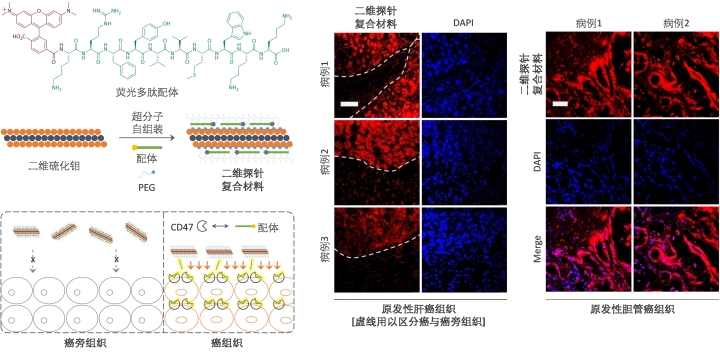Development of biocompatible and water soluble graphene analogues for biomedical applications has emerged as a topical research area. Among the graphene analogues developed, 2D molybdenum disulfide (MoS2) has become the material of interest for biosensing, in vitro/in vivo bioimaging and disease theranostics, because of its good aqueous dispersibility, low toxicity and biocompatibility in vivo.

In collaboration with researchers at Shanghai Institute of Materia Medica and Eastern Hepatobiliary Surgery Institute of the Second Military Medical University, Dr. Xiao-Peng He’s group at ECUST recently developed novel 2D “glycosheet” (Adv. Mater. 2016, 28, 9356) and “peptidosheet” (Adv. Mater. 2016, DOI: 10.1002/adma.201604253) materials by the supramolecular assembly between 2D MoS2 and glycoligand- and peptide ligand-based probes, respectively, for the targeted theranostics of cancer. By targeting a glycoligand receptor, the 2D glycosheet showed the ability to selectively produce both fluorescence and reactive oxygen species in liver cancer cells, over control cells without receptor expression. In particular, the 2D peptidosheet that selectively binds to CD47, a membrane protein, has been proven to be amenable to the differentiation between cancer and paracarcinoma tissue with clinical specimens. The latter study also unravels CD47, a membrane protein, as a potential biomarker for the diagnosis of liver and bile duct cancer.

Link to 2D “glycosheet”: http://onlinelibrary.wiley.com/doi/10.1002/adma.201602748/full
Link to 2D “peptidosheet”: http://onlinelibrary.wiley.com/doi/10.1002/adma.201604253/full





